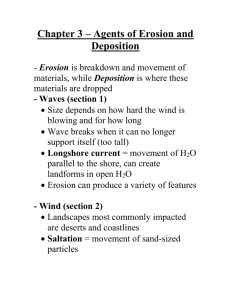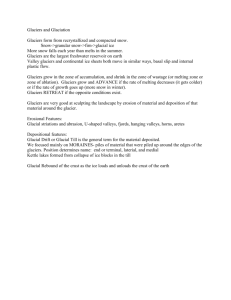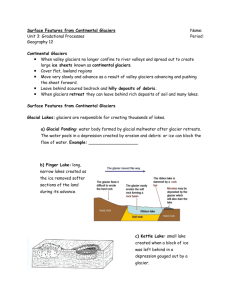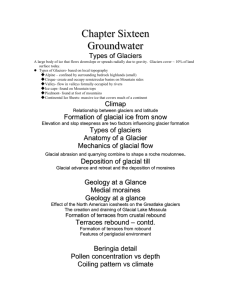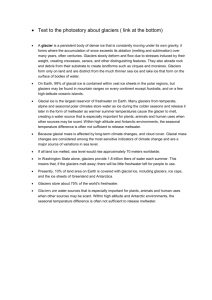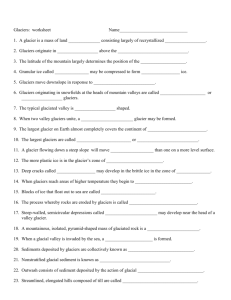Glaciers and Earth History
advertisement
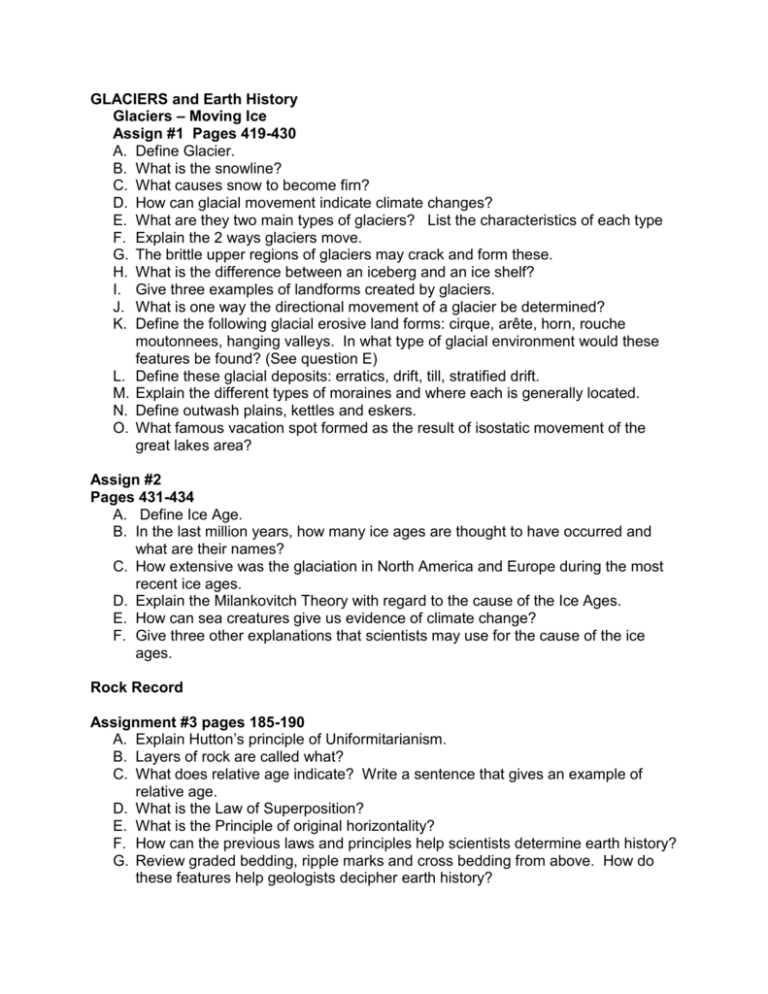
GLACIERS and Earth History Glaciers – Moving Ice Assign #1 Pages 419-430 A. Define Glacier. B. What is the snowline? C. What causes snow to become firn? D. How can glacial movement indicate climate changes? E. What are they two main types of glaciers? List the characteristics of each type F. Explain the 2 ways glaciers move. G. The brittle upper regions of glaciers may crack and form these. H. What is the difference between an iceberg and an ice shelf? I. Give three examples of landforms created by glaciers. J. What is one way the directional movement of a glacier be determined? K. Define the following glacial erosive land forms: cirque, arête, horn, rouche moutonnees, hanging valleys. In what type of glacial environment would these features be found? (See question E) L. Define these glacial deposits: erratics, drift, till, stratified drift. M. Explain the different types of moraines and where each is generally located. N. Define outwash plains, kettles and eskers. O. What famous vacation spot formed as the result of isostatic movement of the great lakes area? Assign #2 Pages 431-434 A. Define Ice Age. B. In the last million years, how many ice ages are thought to have occurred and what are their names? C. How extensive was the glaciation in North America and Europe during the most recent ice ages. D. Explain the Milankovitch Theory with regard to the cause of the Ice Ages. E. How can sea creatures give us evidence of climate change? F. Give three other explanations that scientists may use for the cause of the ice ages. Rock Record Assignment #3 pages 185-190 A. Explain Hutton’s principle of Uniformitarianism. B. Layers of rock are called what? C. What does relative age indicate? Write a sentence that gives an example of relative age. D. What is the Law of Superposition? E. What is the Principle of original horizontality? F. How can the previous laws and principles help scientists determine earth history? G. Review graded bedding, ripple marks and cross bedding from above. How do these features help geologists decipher earth history? H. What is an unconformity? I. Explain the three types of unconformities. J. What is the law of crosscutting relationships? These intrusions are usually produced by what type of rock? ASSIGNMENT #4 PAGES 191-196 A. How does absolute age differ from relative age? (See letter C in Assign. #2) B. What are the advantages and disadvantages of using erosion rates to determine absolute age? C. What are the advantages and disadvantages of using deposition rates to determine absolute age? D. What are varves and how are they used to determine age of rock? E. How can radioactive decay be used as a clock? F. Define half-life. G. How does radio carbon dating work? What are its limitations with regard to age and specimen type? ASSIGNMENT #5 PAGES 197-200 A. The study of fossils is called what? B. Why are fossils studied by numerous branches of science? C. Name and explain 5 ways in which fossils can form. D. What are the 4 main types of fossils? E. What is a trace fossil? F. What is an index fossil? What are the four qualifications of an index fossil? G. Of what use are index fossils in dating earth layers?
